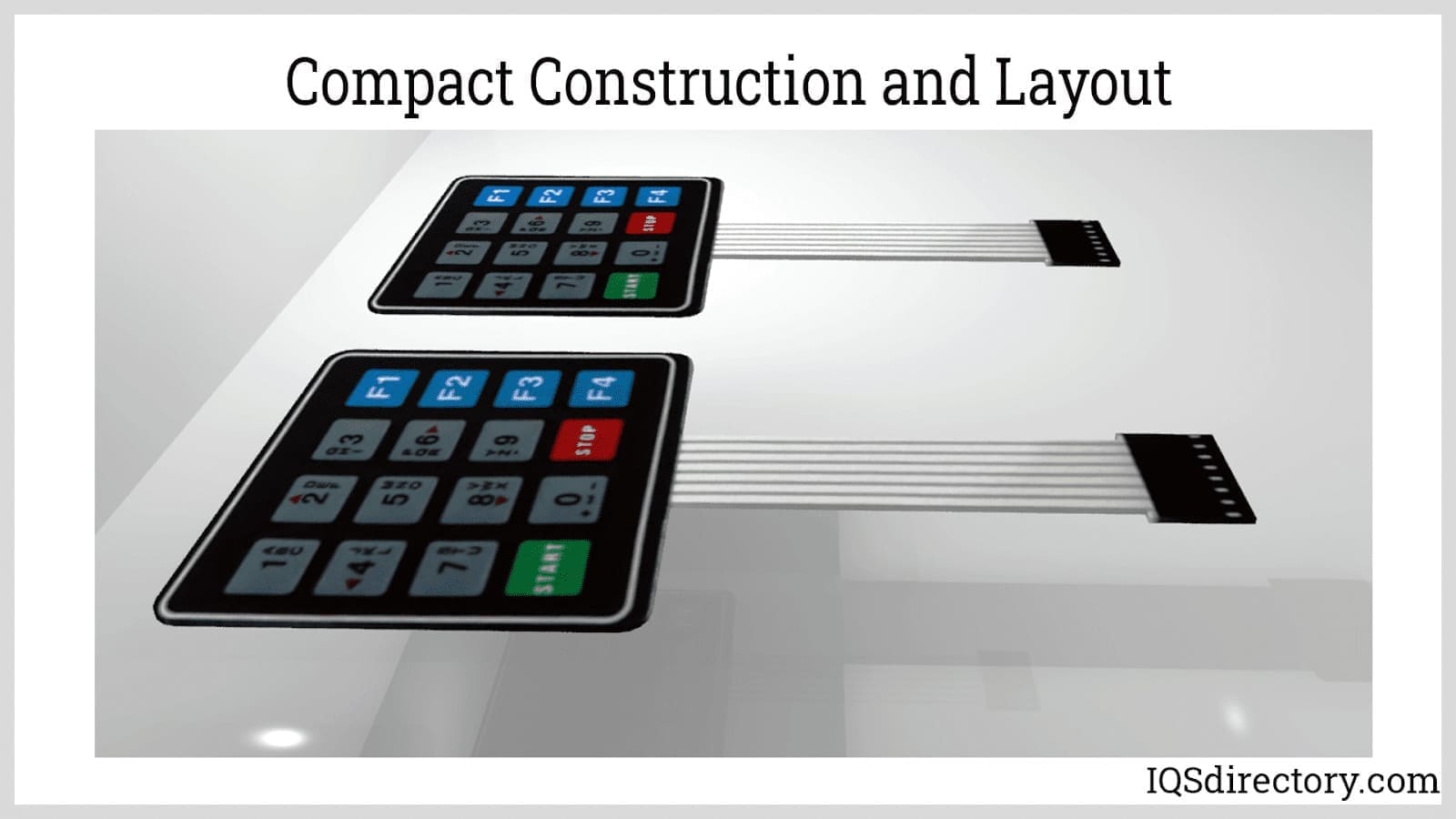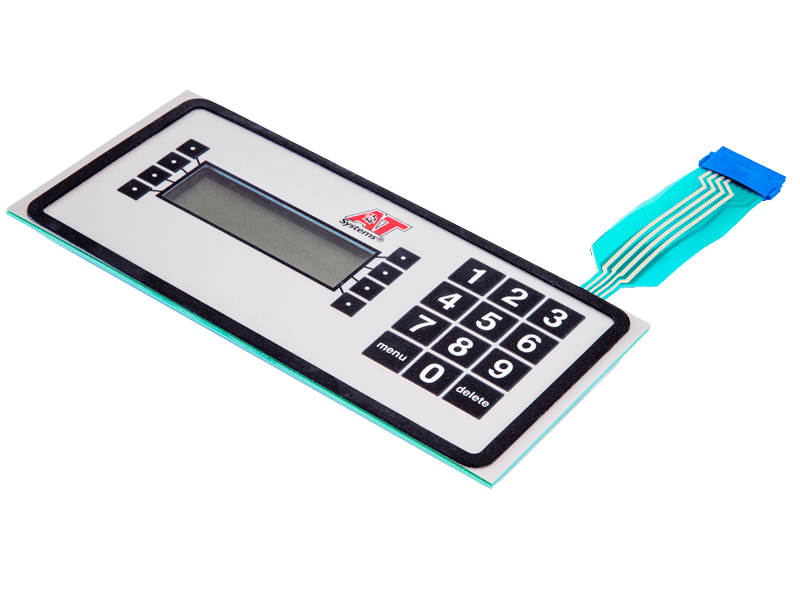A Comprehensive Guide to Membrane Switches for Product Designers
A Comprehensive Guide to Membrane Switches for Product Designers
Blog Article
Recognizing the Significance of Membrane Switches in Interface
Membrane buttons are indispensable elements in the design of reliable interface, helping with not just performance yet also boosting aesthetic allure and user communication. Their distinct attributes, such as resistance to customizable layouts and environmental aspects, make them suitable for a diverse selection of applications across several industries. As we discover the different benefits and future trends related to Membrane technology, it ends up being clear that these buttons are greater than just parts; they represent a convergence of development and usefulness. The implications of this technology on individual experience deserve analyzing additionally.
What Are Membrane Switches?
The spacer layer, which has glue residential or commercial properties, permits the separation of the circuit layer from the overlay, guaranteeing that the button stays in a non-activated state up until pressed. When stress is used to the overlay, it presses the spacer layer, linking the space and completing the circuit in the underlying layer. This layout not just decreases the physical space needed for standard mechanical switches but also boosts the longevity of the gadget, as Membrane buttons are normally resistant to dirt, wetness, and other ecological variables.
Generally located in applications varying from consumer electronic devices to medical devices, Membrane switches are indispensable to contemporary innovation, offering a efficient and straightforward user interface that aligns with modern design needs.
Advantages of Membrane Switches
While many switch modern technologies exist, Membrane Switches deal distinct benefits that make them particularly desirable in numerous applications. One of the main advantages of Membrane buttons is their small design, which permits space-saving implementations in gadgets where property is limited. Their slim profile not just enhances aesthetic charm yet likewise promotes lightweight building.
An additional significant advantage is their resistance to environmental elements. Membrane switches are typically sealed versus dampness, dirt, and contaminants, making them ideal for use popular settings, such as medical devices and industrial devices. This durability extends the life expectancy of the button, minimizing maintenance expenses and boosting integrity.
Moreover, Membrane switches can be personalized to satisfy certain layout needs, including one-of-a-kind graphics and colors that enhance individual interaction. Their tactile comments choices can likewise be tailored to supply an enjoyable customer experience. In addition, Membrane buttons are cost-efficient, specifically in high-volume applications, as they can be generated successfully.
Applications in Various Industries

In the customer electronics field, Membrane switches prevail in devices such as microwaves, cleaning makers, and push-button controls. Their tactile responses and visual options boost individual experience while providing a smooth, modern appearance. In addition, vehicle producers make use of Membrane buttons in dashboard controls and infomercial systems, where space is restricted, and user involvement is vital.
Moreover, the commercial sector leverages Membrane buttons in control panels for machinery and tools, enabling instinctive operation in commonly harsh atmospheres. Their resistance to chemicals and moisture guarantees long life and reliability in these applications. Generally, the adaptability of Membrane Switches adds considerably to their prevalent use, making them vital in various technological domain names.
Layout Considerations for Membrane Buttons

When developing Membrane buttons, numerous vital considerations should be taken into consideration to ensure ideal capability and customer experience. The choice of materials is vital; choosing resilient, premium substratums can improve the switch's longevity and resistance to environmental factors such as moisture and temperature level variations.
Second of all, the style of the visuals overlay need to focus on quality and simplicity of use. Icons and text have to be understandable, and the format must assist in user-friendly interaction (membrane switches). read this post here Additionally, responsive comments is necessary; integrating a tactile dome or other devices can improve the user experience by providing physical verification of activation
One more essential aspect is the button's electrical performance. Developers should make certain that the conductive traces are appropriately developed to minimize resistance and stay clear of signal interference. This involves analyzing the needed actuation pressure and ensuring compatibility with the digital elements they will certainly user interface with.

Future Fads in Membrane Modern Technology
As innovation remains to advance, Membrane buttons are poised to progress significantly, driven by technologies in materials and producing strategies. One emerging pattern is the incorporation of sophisticated products, such as conductive inks and adaptable substrates, which improve longevity and decrease the total weight of Membrane switches. These materials not just boost the tactile reaction yet additionally permit the style of switches that can stand up to harsher ecological problems.
Furthermore, the combination of touch-sensitive modern technologies is changing traditional Membrane Switches into even more interactive customer interfaces. Capacitive touch sensing units embedded within Membrane switch panels can provide a much more receptive and instinctive individual experience, aligning with the expanding demand for smooth, modern-day layouts in consumer electronics.
Additionally, developments in printing methods, such as electronic and 3D printing, allow fast prototyping and modification of Membrane buttons. This versatility enables makers to react quicker to market needs and customer preferences.
Lastly, sustainability is becoming a considerable focus, with makers exploring environment-friendly products and processes. As these trends unfold, the future of Membrane modern technology guarantees boosted capability, visual charm, and environmental responsibility, strengthening their function in sophisticated individual interfaces across numerous sectors.
Final Thought
To conclude, Membrane Switches stand for a crucial element in the style of interface, combining performance with aesthetic adaptability. Their advantages, consisting of longevity and resistance to ecological elements, make them suitable for varied applications across numerous markets. Moreover, thoughtful design factors to consider improve user communication and experience. As developments in technology proceed, the evolution of Membrane switches is anticipated to further improve interface, driving innovation and boosting usability in a significantly complicated technical landscape.
Membrane switches are essential elements in the layout of effective individual interfaces, promoting not only performance yet additionally enhancing aesthetic charm and customer communication.Membrane Switches serve as a crucial part in various user interfaces, assisting in a smooth communication in between users and electronic devices.While many button modern technologies exist, Membrane Switches deal distinct advantages that make them specifically desirable go to my site in numerous applications.Additionally, Membrane switches can be customized to fulfill details style requirements, integrating distinct graphics and colors useful site that improve individual communication.In final thought, Membrane Switches represent a crucial element in the style of user interfaces, combining functionality with aesthetic flexibility.
Report this page